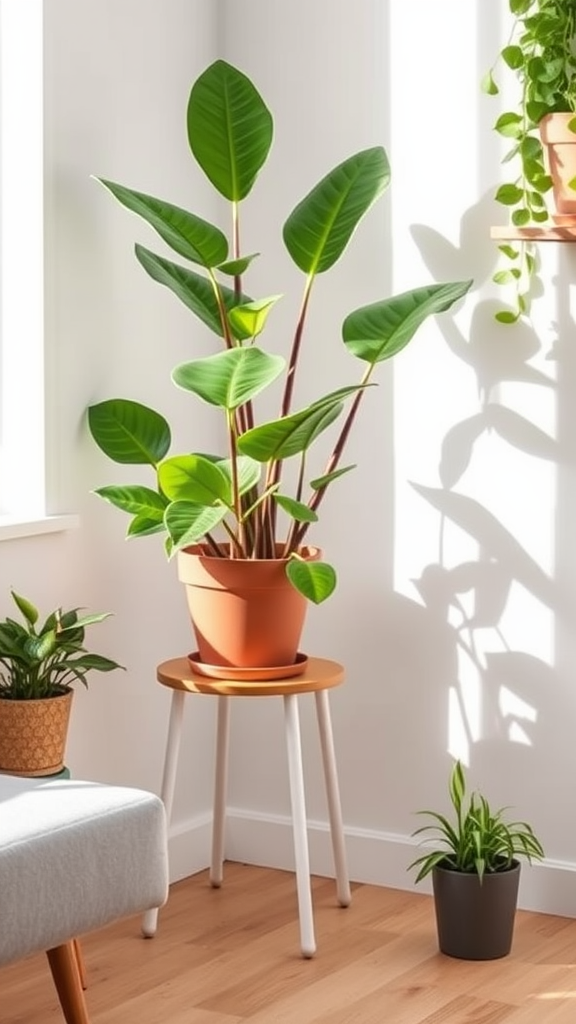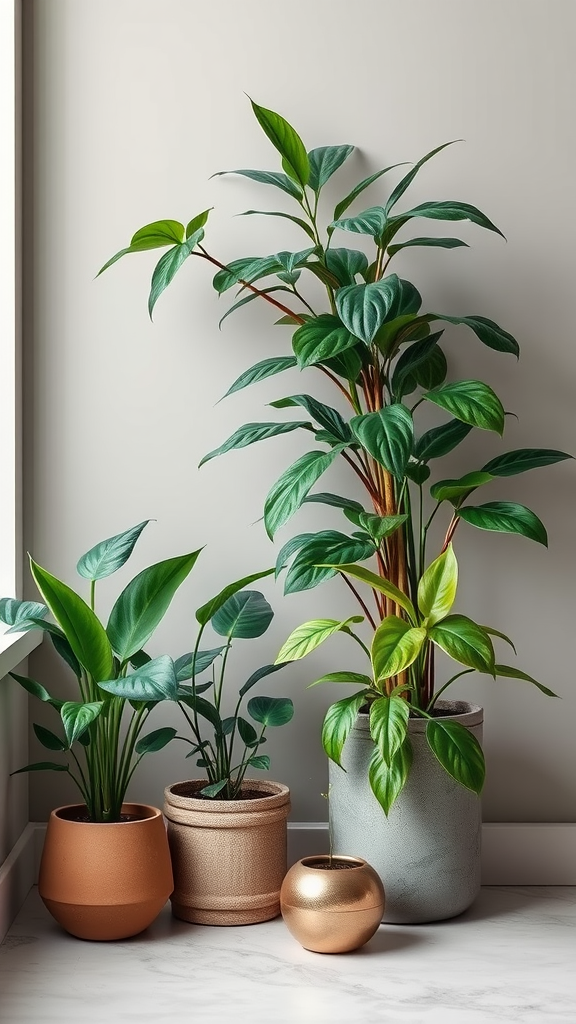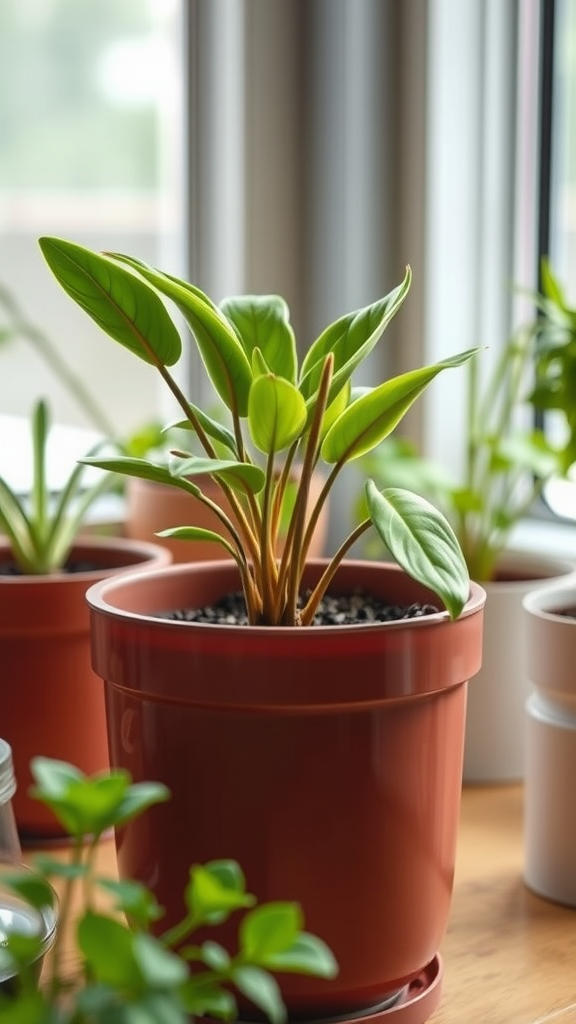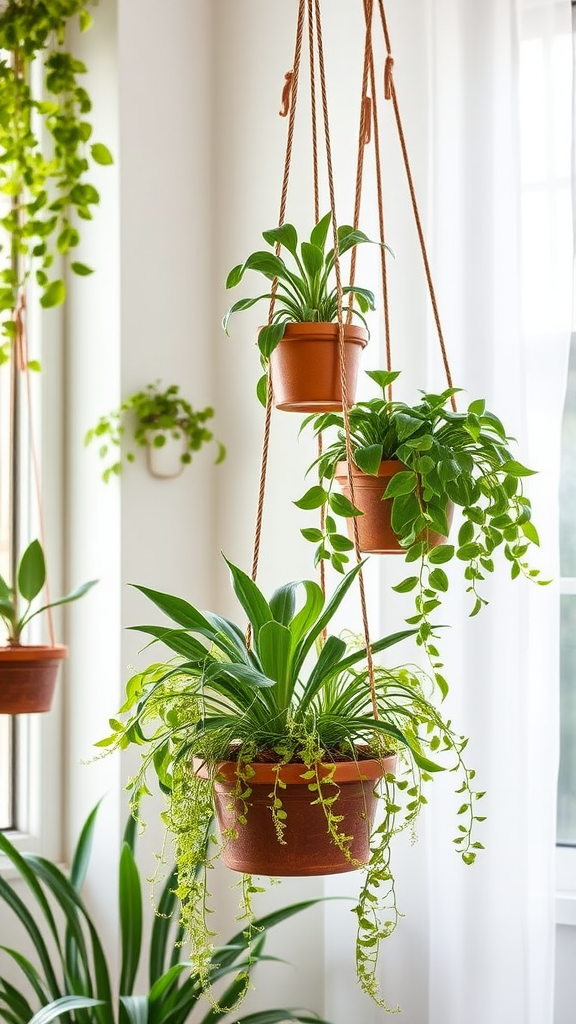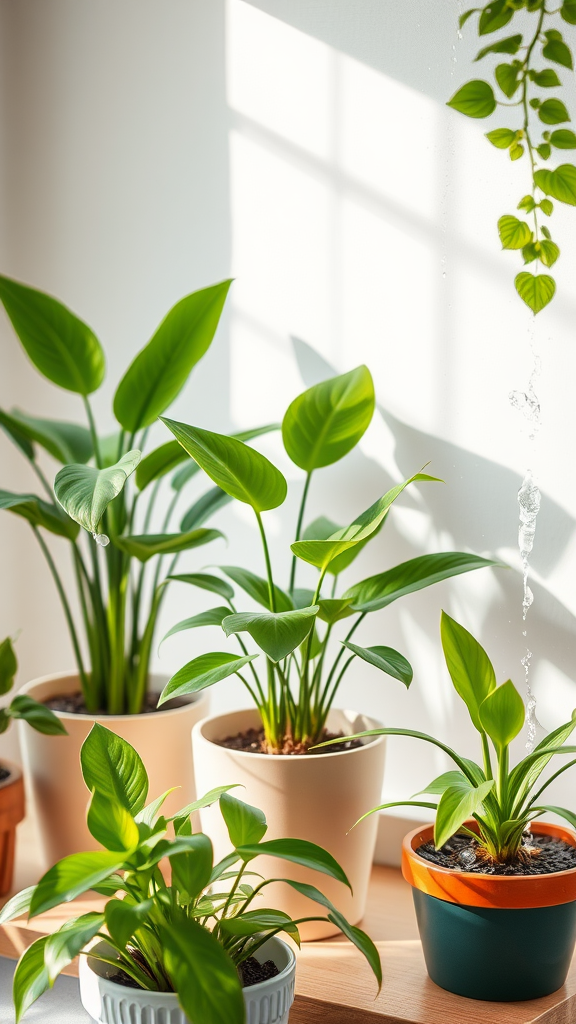Top 15 Low-Light Plants That Thrive in Any Space
Are you looking to bring some greenery into your home but worried about insufficient light? No need to fret! There are many low-light plants that can thrive in dimmer spaces. These plants not only beautify your surroundings but also improve air quality and provide a sense of calm. Here is a list of 15 hardy plants that will flourish in areas with limited sunlight.
1. Snake Plant
The Snake Plant, also known as Sansevieria, is a popular choice for beginners. This plant can tolerate neglect and low light conditions, making it perfect for bedrooms and offices. Its tall and striking leaves add a modern touch to any space.
2. ZZ Plant
ZZ Plants, or Zamioculcas zamiifolia, are famous for their shiny, dark green leaves. They can thrive on low light and require minimal care, making them great for busy folks. Just make sure not to overwater them!
3. Pothos
Pothos, also known as Devil’s Ivy, is a versatile trailing plant that grows well in low light. Its heart-shaped leaves come in varying shades of green, yellow, and even white. Pothos can be placed on shelves or tables, adding a lush look to your space.
4. Peace Lily
Peace Lilies are stunning plants that can bloom even in low light. Their white flowers stand out beautifully against dark green leaves. Peace Lilies also help purify the air, making them a great choice for bedrooms or living rooms.
5. Spider Plant
The Spider Plant is resilient and thrives in a variety of conditions. Its arching leaves and tiny offshoots, known as “pups,” make it visually interesting. Place it in hanging baskets, and watch it flourish in low light!
6. Cast Iron Plant
As the name suggests, the Cast Iron Plant is nearly indestructible. It tolerates neglect, low light, and even temperature changes. Its lush green foliage adds a fresh feel to any room.
7. Dracaena
Dracaena comes in various species, some of which thrive in low-light conditions. With long, slender leaves, this plant can add a dramatic touch to your decor. Just ensure that it’s not overwatered!
8. Parlor Palm
The Parlor Palm is a beautiful indoor plant that can grow well in low light. Its feathery fronds give a tropical vibe to your room, making it a favorite among plant lovers.
9. Boston Fern
Boston Ferns are lush and feathery, bringing life into dim corners of your home. They do prefer a bit of humidity, so mist them occasionally to keep them happy.
10. Chinese Evergreen
This low-maintenance plant, known for its adaptability, is perfect for low-light spaces. Chinese Evergreens come in various colors and patterns, making them attractive indoor additions.
11. Rubber Plant
Rubber Plants have thick, glossy leaves and can grow well in low-light conditions. They can reach impressive heights, making them perfect as statement pieces in larger rooms.
12. Philodendron
Philodendrons are a popular choice due to their heart-shaped leaves and vining growth. These plants are very tolerant of low light and are easy to care for, adding an elegant touch to your space.
13. Areca Palm
The Areca Palm is another plant that thrives in low-light conditions while providing a tropical look. Its bright green fronds can make your space feel more lively and inviting.
14. Kentia Palm
Kentia Palms are known for their elegant, arching fronds and can tolerate low light. They are slow-growing but can add a touch of class and serenity to your environment.
15. Money Tree
The Money Tree, or Pachira aquatica, is known for its braided trunk and large, palmate leaves. While it prefers brighter light, it can adapt to low-light conditions with proper care. It is often considered a symbol of good luck!
These low-light plants into your home can create a calming and beautiful environment. They are ideal for anyone who loves greenery but may not have the best lighting conditions. With these green companions, you can enjoy nature’s beauty in any space!
Tips for Caring for Low-Light Houseplants
If you adore greenery but struggle to keep plants alive, you’re not alone. Many people face challenges with low-light conditions in their homes or offices. The good news is that several plants not only adapt to low-light environments but also thrive in them. With the right tips and care, you can enjoy beautiful, lush plants that bring life to even the dimmest corners of your space.
First, understanding your space is essential. Evaluate the light situation in your room. Is it consistently dark, or does it have intermittent light? Different plants will respond differently based on the nuances of light availability. Make sure to position your plants accordingly.
Watering Wisely
Overwatering is a common mistake when caring for low-light plants. These plants don’t utilize water as quickly as those in brighter areas.
- Check Soil Moisture: Before watering, touch the soil to see if it’s dry. If the top couple of inches feel moist, hold off on adding more water.
- Use Drainage: Ensure your pots have drainage holes to prevent water from pooling, which can lead to root rot.
Choose the Right Soil
Using the correct soil mix can make a significant difference in how your plants thrive.
- Potting Mix: Look for soil labeled specifically for houseplants. This mix usually offers the right balance of moisture retention and drainage.
- Aeration: Consider adding perlite or vermiculite to improve aeration, helping roots breathe better.
Meet Their Nutritional Needs
Even low-light plants need nutrients to flourish. However, they generally require less frequent feeding compared to other plants.
- Use Fertilizer Sparingly: Applying a half-strength liquid fertilizer once every month during the growing season (spring and summer) usually suffices.
- Skip Winter Feeding: Typically, plants enter dormancy in winter, so there’s little need for fertilizer during this period.
Humidity Levels
Some low-light plants appreciate higher humidity levels, especially tropical varieties. Maintain moisture in the air using these tactics:
- Misting: Lightly mist your plants every few days to increase humidity.
- Group Plants: Cluster your plants together, as they will create a microenvironment with higher humidity.
- Use Trays of Water: Place your pots on trays filled with pebbles and water without letting the pot sit directly in the water.
Managing Pests
Pests can be an unwelcome surprise, especially since low-light plants might be slightly more vulnerable. Here’s how to protect them:
- Regular Checks: Inspect your plants weekly for signs of pests like spider mites or aphids.
- Keep Clean: Wipe the leaves with a damp cloth to remove dust, which can attract pests.
- Natural Pesticides: If you spot pests, use a diluted soap solution or neem oil as a natural pesticide.
Rotate Your Plants
To ensure even growth and prevent leaning toward light, rotate your plants every few weeks. This practice promotes symmetrical growth and healthier plants.
It’s also worth noting that while some plants prefer low-light conditions, they still need some indirect light. Instead of placing them in complete darkness, find spots where they can receive a little ambient light. This balance will help your green friends maintain their vitality.
Patience is key when caring for low-light houseplants. They may not grow as quickly as others but watch them closely; with your loving care, they will reward you with their lush presence. By following these tips, you’ll not only enhance the beauty of your space but also cultivate a calming atmosphere filled with nature’s charm.
Conclusion
Choosing the right plants for low-light spaces can transform your home and improve your well-being. The 15 low-light plants we explored not only add beauty but are also resilient and easy to care for. From the popular Snake Plant to the unique ZZ Plant, each of these options will thrive where sunlight is limited, making them perfect companions for dimly lit corners or shaded rooms.
Caring for these wonderful houseplants doesn’t have to be daunting. Simple tips, such as understanding their watering needs and ensuring proper humidity levels, can help you keep them vibrant and healthy. Remember to rotate your plants occasionally, monitor their growth, and clean their leaves to encourage better light absorption—even in shades of gloom.
Low-light plants offer a fantastic opportunity to green up your home without the stress of demanding sunlight. Whether you’re a plant enthusiast or a beginner, these resilient plants can bring joy and tranquility to your living space. Embrace the ease of low-light plant care and enjoy watching your space come alive one green leaf at a time.
As you consider adding to your indoor garden, remember that nurturing these plants is also an expression of your personal style. With the right plants and a little care, you can create a serene environment that lifts your spirits and enhances your home. Let your love for greenery flourish, even in the shadiest conditions!

